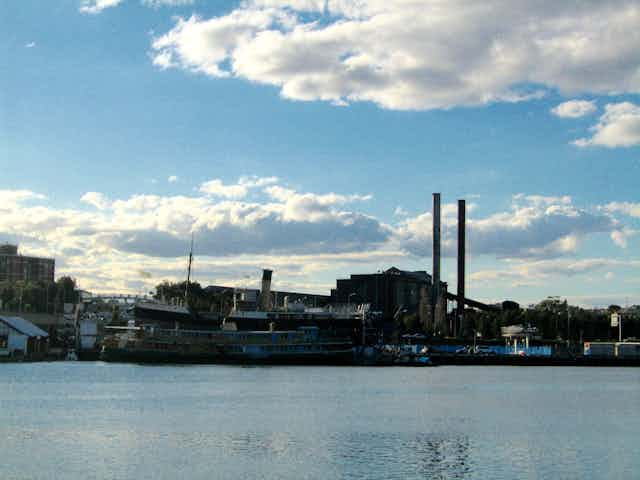The New South Wales government has announced, through its development agency UrbanGrowth, that it will assume the role of master developer of the White Bay Power Station site in Sydney’s inner west.
The announcement on Thursday ended a lengthy request-for-proposals process to develop the site as a “tech hub”. Following a spectacular launch event on the site last year, 13 proposals were received from complex consortiums, which reportedly included Lend Lease with anchor tenant Google, and Mirvac with Ecoworld.
On Thursday, NSW Planning Minister Rob Stokes said:
This will not be an exercise where government hands over large areas of public land and gives away control, without ensuring good outcomes for the community.
While the NSW opposition is crowing about Premier Mike Baird’s “completely bizarre” turnaround, it’s worth considering what UrbanGrowth NSW chairman John Brogden might have meant when he said:
While some proposals were strong in certain areas, unfortunately there were no complying proposals that addressed the evaluation criteria to achieve the government’s plan for the site.
What are the grounds for non-compliance?
So what were these criteria? There are three general evaluation criteria for non-compliance: financial offer; quality of secured tenant; and design.
Across 13 schemes, failure of compliance could have happened in any number of ways. But let’s speculate based on information that is available in the public realm.
Lend Lease’s proposal involved a partnership with Google, one of the most sophisticated tech operators globally. One could assume, then, that compliance failure was not on the grounds of quality of tenant.
Given Lend Lease’s significant experience developing large projects in Australia and internationally, one might also assume that the financial offer, perhaps even in the form of high-density housing as the UrbanGrowth press release suggests, also could not be the grounds for non-compliance.
So by a process of deduction – as good a process as any other given the lack of transparency – we’re left with design as the grounds of non-compliance.
Anyone following the Planning Assessment Commission (PAC) hearings on the proposed casino at Barangaroo will know that this issue – or, rather, the creeping culture of non-compliance of aspects of the project – has dogged the Barangaroo development from the outset.
It is how we find ourselves in a position where the UNESCO-listed Sydney Opera House will now feature, when viewed from the water, the very big casino visible through its sails.
The state government’s taking charge of masterplanning of White Bay, via UrbanGrowth, has to be understood within this context.
And I say that a process of deduction to come to this conclusion is as good as any other process because an incredible lack of transparency characterises all of these projects in the city. A key condition of working with either UrbanGrowth, Lend Lease or the Barangaroo Delivery Authority is the signing of confidentiality clauses.
The sheer scale of these projects in the city right now means that a significant proportion of members of the architecture and planning professions in Sydney are bound to silence. Many of those with a professional responsibility to speak and act in the public interest have been taken out. Those who remain free to speak in the public realm are often ill-informed and, as a result, impotent.

Now to rebuild trust in public planning
As a consequence of an environment so poorly informed, the Sydney public is conflating several issues. This was evident in public protests several weeks ago.
The disparate issues include:
rising concern about council amalgamations and a perception that democratic processes are being restricted;
city transformations as a consequence of the lockout laws and their application; and
the slow pace of public transport reform and extension, coupled with intensifying congestion in the city.
Contributing to the sense of public frustration is the fact that, through the experience of Barangaroo, “there is a deep cynicism across Sydney that proper planning processes have been bypassed in favour of an agreement made behind closed doors”, as leading planner John McInerney, the chairman of the local Residents Action Group, told the PAC’s public hearing last month.
“Casino Mike” and his government are right to be listening to their electorate with their change of position on White Bay.
What all of this starts to indicate, and what UrbanGrowth’s taking up of responsibility for the masterplanning of White Bay suggests, is that the private sector in NSW has lost its agency to deliver projects in the public interest. And the state government will be increasingly damaged by this perception.
Globally, many complex government agency delivery vehicles and public-private partnerships are producing very successful urban renewal projects. Examples include Orestad in Copenhagen and Roosevelt Island in New York. We have to be willing to allow government to take up risk again in the public interest, instead of outsourcing all risk to the private sector.
The fact that the state government has stepped in to take back control of the White Bay redevelopment in the face of design non-compliance is actually an amazing story. One would hope this is a process of learning at work.

